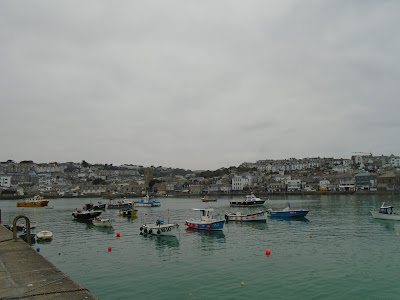 |
| Brookwood American Cemetery, Surrey England |
Oh, the luscious indulgence of a
three-day weekend! The late sleep and languid sprawl over coffee, with no
reason to shower until noon. Then comes the promise of grilled dinners and big
salads, cold beer and cake. Such is the custom of any Memorial Day
Weekend.
Since we were unable to spend
this year’s with friends and loved ones (and I sorely miss good barbeque!), we chose to do almost the exact
opposite and visited a cemetery instead.
About an hour’s train ride from
our flat, the Brookwood American Cemetery is one of the
few outside the US where our fallen WWI soldiers lie.
 |
| One of several dozen graves for unknown soldiers. "Here rests in honored glory an American soldier known but to God" |
Nearly every state
is represented among the 468 graves, of which 41 are unknown soldiers.
Inside the columned chapel, carved into its marble walls, are the names of 563 missing service
members, mostly navy and coast guard, whose remains were never recovered.
But our veterans, these young men and women far from home, are more than numbers and deserve to be remembered as something other than parts of a
sum.
I wondered, as I walked among their graves,
what these young fighters had thought
of. What they had longed for. Did Private Charles
Powers from Virginia close his eyes and let the smoke from wood trench fires
carry him back to his beloved Blue Ridge mountains?
Did Private Irvin McKenzie lay dying
that September of 1918 knowing his family in Michigan was out picking
apples as they had done every year for as far back as he remembered?
Maybe California native,
Private Noble Marchbanks, missed home and the cracking of golden walnuts under his heel. Maybe he remembered the rich musky smell and let it fill his nostrils before he - and so many of his comrades - died
that early October day.
Did he wonder if his young life was ever worth anything to anyone?
They shall not grow old, as we that are left grow old;
Age shall not weary them nor do the years condemn.
At the going down of the sun and in the morning,
We will remember them.
-- Lawrence Binyon
 |
| Side by side, they fought and died. |
Nearly 100 years later, these
brave men and women are still remembered. In the beautiful calm setting of Brookwood,
veterans, local dignitaries, and international guests gathered to pay tribute to our
courageous service members. There was music and solemnity,
poppy wreaths and gratitude. And tears. Still there were tears.
“When you go home tell them of us and say,
For
your tomorrow, we gave our today.”
In recent years Memorial Day has
become the unofficial opening bell to summer and all its food, family and fun. But maybe this
year it could be something more. Please be respectful of all who died serving our country. And give thought to those who could not kiss their loved ones one last time, those resting so far from home.
For more pictures of our visit to Brookwood American Cemetery, click here.
-----------------------
Brookwood American Cemetery is one of more than 50 locations beautifully maintained by the American Battle Monuments Commission at home and abroad, please click here.
For more pictures of our visit to Brookwood American Cemetery, click here.
-----------------------
Brookwood American Cemetery is one of more than 50 locations beautifully maintained by the American Battle Monuments Commission at home and abroad, please click here.
















































